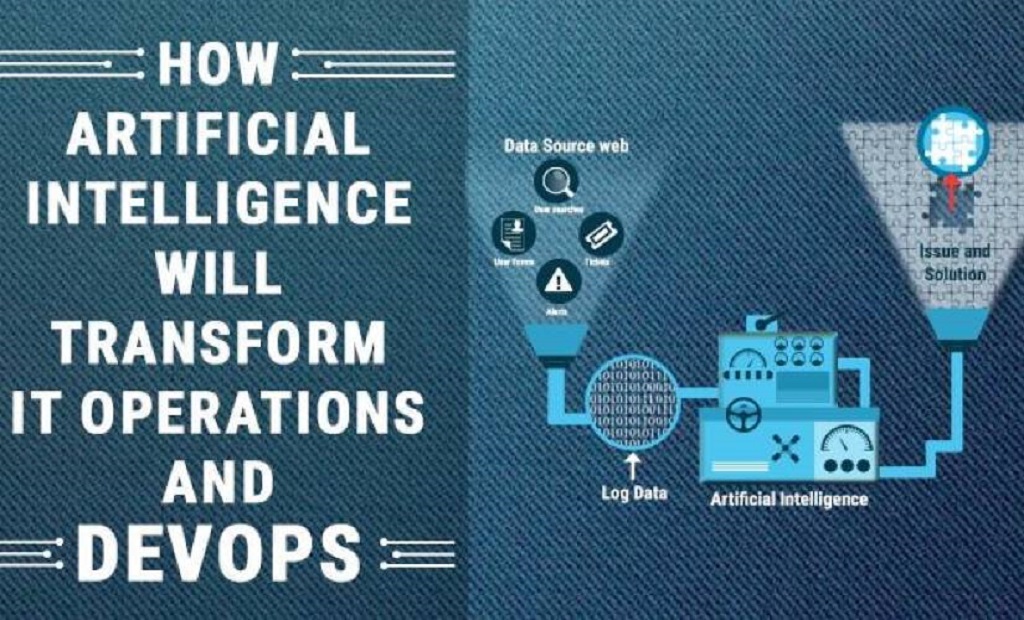Artificial Intelligence for IT operations is on its way for reimagining DevOps pipeline through continuous alert management. AIOps uses computational techniques and data science for automating common operational tasks. Furthermore, it uses the inference models and ingests metrics to withdraw actionable penetrations from data. The teams for IT operations achieve service health’s contextual views. But, automation’s introduction makes alerting and remediation much convenient and turnkey. For the Development for IT operations (DevOps) enabled firm, this automation is almost custom-made. In an organization like this, continuous operations management is the basic operating procedure.
The basic workflow of alert management involves the following –
- Correlation of the ingested alerts to the common cause
- Prioritization and Triage of alerts for the resolution
- Integration with the ITSM tools to achieve modified problem management. It involves the creation of incident tickets for issues that require further analysis of root cause.
It might seem simple, but each step in the workflow needs a lot of human time for execution. The average time across the task flow increases disproportionately along with a number of incoming alerts.
Read more: How you Prepare UPSC CDS Exam to Higher CDS Result
AIOps provide automation and intelligent alerting of the tasks. It means that there is no need for a human to deal with alerts. This leads to cost savings, efficiency, speed and plenty of other values related to DevOps. Moreover, one can also join online courses and gain more information about Artificial Intelligence.
As per various reports, Artificial Intelligence is going to pave way for plenty of job opportunities by 2020. AIOps consistently learns the patterns and applies the learned models against the incoming alert streams. It helps in making sense of the parallel and cascading impacts. It blends the related alerts into the inferences as per learning models.
Read more: The Effects of Scholarships to Students’ Future – In Reaching Career Goals
The inference models showcase how the inferences are driven in a system. They permit users for setting filter criteria. Users can also apply an analytical model to specific kind of IT resource across infrastructure stacks. DevOps and IT team can then handle these inferences rather than addressing the individual alerts. It also reduces the noise that users acquire for sifting through in the everyday operations. They can establish these inferences for operating contextually and continuously while supporting the CD/CI pipeline.
The 3 usual inference models involve –
• Clustering – This type of model uses the attributes for driving insights. It is done by analyzing the similarities and correlation of different alerts into a single one.
• Topology – It uses the relations between underlying infrastructure and IT services for building inferences. They identify root cause alerts with impact analysis and the appropriate situational context for an incident.
• Co-occurrence – This model uses the patterns of alert sequence for the existing alerts to correlate them. It also helps in identifying an incident’s root cause.
Every alert presents the problem condition that requires to be fixed. The AIOps addresses the incidents that are based on the actions’ well-defined order. It invokes the scripts on the alert triggers while also executing the remediation actions. This can automate the workflows for those alerts that need human attention, or escalation, etc. Advanced AIOps tools utilize the native instrumentation for determining the frequency of particular alert sequences. Although DevOps has become the standard for automation, AIOps will rule the industry in the future. The major reason behind this is its reduced dependency on particular tools.
Read more: The Only Way to Get Better At Mathematics
According to the experts, AIOps will certainly modify complexion of IT ops workforce in the upcoming years. There will be no need for people to sift through the alerts manually. DevOps is all about modifying flexibility and agility. AIOps must help through the automation of the path from the development to production. AIOps depend upon data aggregation from multiple systems. On the other hand, DevOps relies on the integration of previously siloed systems. The promise of the AIOps is that it is able to detect anomalies and suggest optimizations etc. Moreover, it can also predict deviations and performance problems from baseline and automate the fixes.
Many AIOps tools that are designed for conventional operations can cover some important DevOps systems. The biggest trend for AI in the DevOps is reducing the noise in software development processes’ digital exhaust. Plenty of online courses in AIOps are designed specifically for the tech enthusiastic ones. They can easily be a part of these courses and enhance their level of knowledge. The DevOps teams can use the AIOps for driving faster deployments as well as better collaboration.
Majority of the organizations are choosing the AIOps for supporting DevOps speeds. It results in a fast analysis of the IT problems as well as better automate incident handling. This is the major reason why many people are keen on making a career after getting trained in AI. In the future, AIOps will support the DevOps with automation, workload management, and bug identification.






